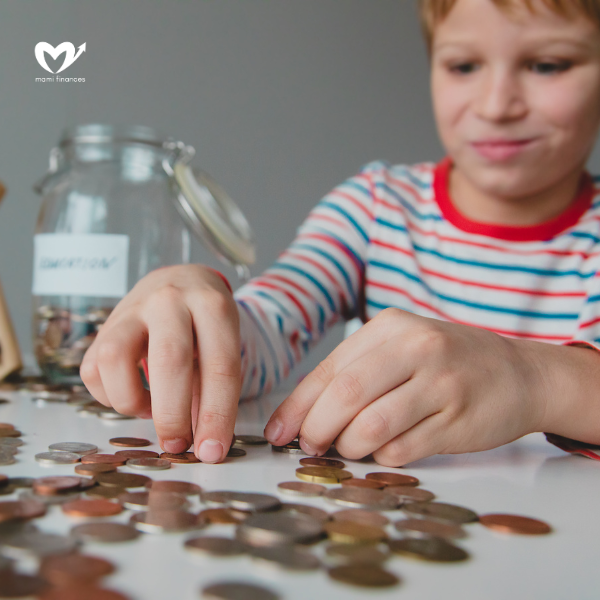9 Fun Activities to Introduce the Value of Money to Kids
Financial literacy remains a crucial cornerstone for success and security in an ever-evolving economic landscape. Instilling money management principles from a young age can set children on a path of prudent financial decision-making that lasts a lifetime.
According to a survey by the Council for Economic Education, students who are exposed to financial education are more likely to engage in financially responsible behaviors such as saving, budgeting, and investing.

Benefits of Teaching Kids The Value Of Money
According to a study conducted by researchers at Brigham Young University, children who receive effective financial education from their parents are more likely to exhibit healthy financial behaviors such as saving and budgeting.
The study suggests that teaching kids about money management at an early age can significantly impact their financial decisions as adults, leading to better financial outcomes.
Additionally, the FDIC (Federal Deposit Insurance Corporation) highlights that early financial education for children has been linked to lower debt levels, higher savings, and higher credit scores as they mature into adulthood.
Furthermore, CNBC reports that teaching kids about money can lead to beneficial long-term outcomes such as an increased likelihood of attending college, graduating with less debt, and having better credit as adults.
Age-appropriate financial education can also help children develop essential skills such as critical thinking, decision-making, and delayed gratification. These skills are crucial for success in many areas of life, including academics and career advancement.
You might enjoy these posts:
- Kid Gets An Allowance: 5 Things You Should Stop Paying For
- How Do You Teach A Child To Make A Budget?
Age-Appropriate Activities for Introducing the Value of Money to Kids
Here's a table outlining different age-appropriate activities to introduce the value of money to kids:
| Kids' Age | Activity |
|---|---|
| 3-5 years | DIY Piggy Bank Creation |
| Money Sorting Game | |
| Coin Counting Races | |
| Currency Exchange Exploration | |
| 6-8 years | Grocery Store Budgeting Simulation |
| Money Board Games | |
| Entrepreneurial Lemonade Stand | |
| Savings Challenge Chart | |
| 9-12 years | Grocery Store Budgeting Simulation |
| Money Board Games | |
| Entrepreneurial Lemonade Stand | |
| Charity Donation Decision Making |
This table provides a range of activities tailored to different age groups, ensuring that children are engaged in age-appropriate and meaningful experiences that help them understand the value of money.
For parents, educators, and financial literacy advocates, this guide offers innovative strategies and entertaining activities designed to educate children on the value of money.

9 Fun Activities to Introduce the Value of Money to Kids
Introducing the value of money to kids does not have to be a boring or daunting task. With a little creativity, financial education can be both fun and engaging for children. Here are nine activities to help get you started:
Activity 1: Money Jar
A classic yet effective method, the money jar can help kids grasp the concepts of saving and budgeting. By decorating their own money jars and setting specific goals for their savings, children learn the fundamental financial discipline required to budget for the things they desire.
Activity 2: Play Store
Simulating a shopping experience at home can introduce children to the real-world implications of buying and selling. Not only does it allow them to practice budgeting, but it also involves critical thinking as they weigh their spending choices.
Activity 3: Money Board Game
Board games such as ‘Monopoly' provide an interactive platform to educate kids about various financial concepts, including earning, spending, and saving. It's a dynamic way to encourage financial conversations through play.
Activity 4: Coin Sorting
A hands-on activity, coin sorting not only familiarizes children with different currency denominations but also helps sharpen their math skills. Identifying and separating coins enhances their knowledge of value and arithmetic.
Activity 5: Chore Chart with Rewards
By establishing a chore chart that compensates with a small monetary reward, children can learn about the economic principle of earning. This reinforces work ethic concepts and introduces them to basic money management.

Activity 6: Money Journal
Encouraging children to write about their spending and saving habits in a money journal can lay a strong foundation for financial reflection and planning. It's a personal approach to understanding the impact of their financial decisions.
Activity 7: Virtual Budgeting Game
Technological advancements have made it possible to simulate financial scenarios through virtual budgeting games. These platforms offer a hands-on learning experience that prepares kids for digital money management without the risks of the real world.
Activity 8: Entrepreneurial Lemonade Stand
Running a lemonade stand or any small business venture offers multifaceted lessons in entrepreneurship, business strategy, and money management. This activity allows kids to explore creativity, customer service, and basic accounting.
A visit to a local bank can demystify the concepts of banking and finance for children. Learning about savings accounts and how banks operate provides children with a practical perspective on financial institutions.
Introducing children to the value of money through fun and engaging activities can forge healthy financial habits early on. As we navigate the complexities of our modern financial systems, the benefits of teaching kids the value of money through interactive experiences are undeniable.
These formative experiences lay the groundwork for a lifetime of informed money management and financial literacy.
As various forms of financial engagement continue to expand and develop, it's our collective responsibility to ensure our youth are equipped with the knowledge to navigate their financial futures confidently.
Let's continue to find joy in financial education and celebrate each lesson as a stepping stone towards our children's economic empowerment.
Remember, in the world of children's financial education, every game played, every coin saved, and every dollar earned is a small victory in developing a well-rounded, financially savvy individual.





